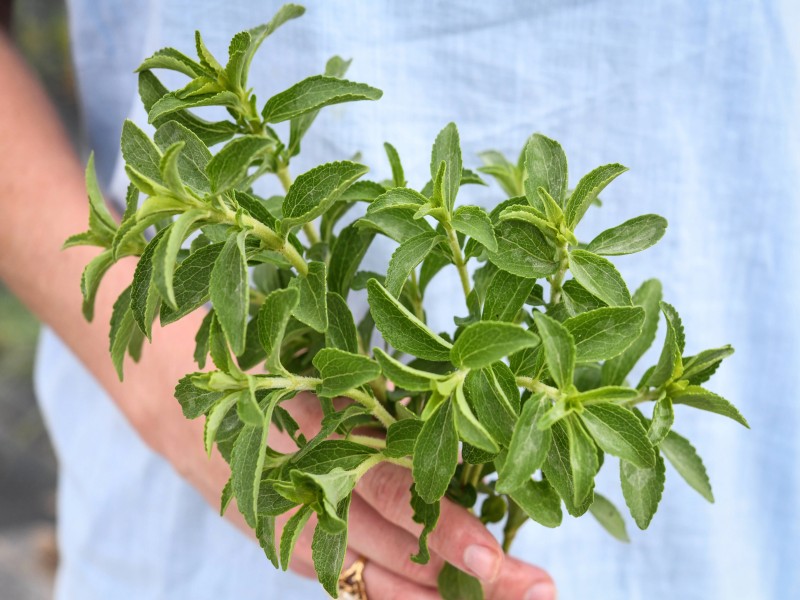WHAT ARE STEVIA SWEETENERS?
Stevia sweeteners are no-calorie sweeteners that can be used to lower one’s intake of added sugars while still providing satisfaction from enjoying the taste of something sweet. While some types of sweeteners in this category are considered low-calorie (e.g., aspartame) and others are no-calorie (e.g., stevia sweeteners, monk fruit sweeteners and sucralose), collectively they are often referred to as sugar substitutes, high-intensity sweeteners, non-nutritive sweeteners or low-calorie sweeteners.

Like other no-calorie sweeteners stevia sweeteners are intensely sweet. Stevia sweeteners range from being 200-350 times sweeter than sugar, and as such only small amounts of stevia sweeteners are needed to match the sweetness provided by sugar. Stevia sweeteners can be used by food and beverage manufacturers as an ingredient in beverages (such as diet sodas, light or low-sugar juices and flavored waters), canned fruits, condiments, dairy products (such as ice cream, flavored milk and yogurt) and other foods (such as baked goods, cereals, chocolate and other confections) and syrups. Because they are stable at high temperatures, stevia sweeteners can be used in baked goods. However, a recipe that uses stevia sweeteners in place of sugar may turn out slightly different because, in addition to sweetness, sugar plays several roles related to volume and texture in recipes but varies based on the type of recipe.
HOW ARE STEVIA SWEETENERS PRODUCED?
Stevia sweeteners are derived from the leaves of the Stevia rebaudiana (Bertoni) plant, an herbal shrub native to South America. The stevia plant has been used for food and medicinal purposes for hundreds of years, and its leaves and crude extracts have been sold as a dietary supplement. Stevia sweeteners are made by extracting steviol glycosides from the leaves of the stevia plant and purifying them to remove some of the bitter attributes found in the crude extract. Steviol glycosides all have a common basic backbone called steviol. They include compounds like stevioside and many different forms of rebaudiosides, the most common of which is rebaudioside A (or reb A).1 Some steviol glycosides are also made through processes called bioconversion and fermentation, which allow better tasting and less bitter rebaudiosides, such as reb M, to be produced on a larger scale.